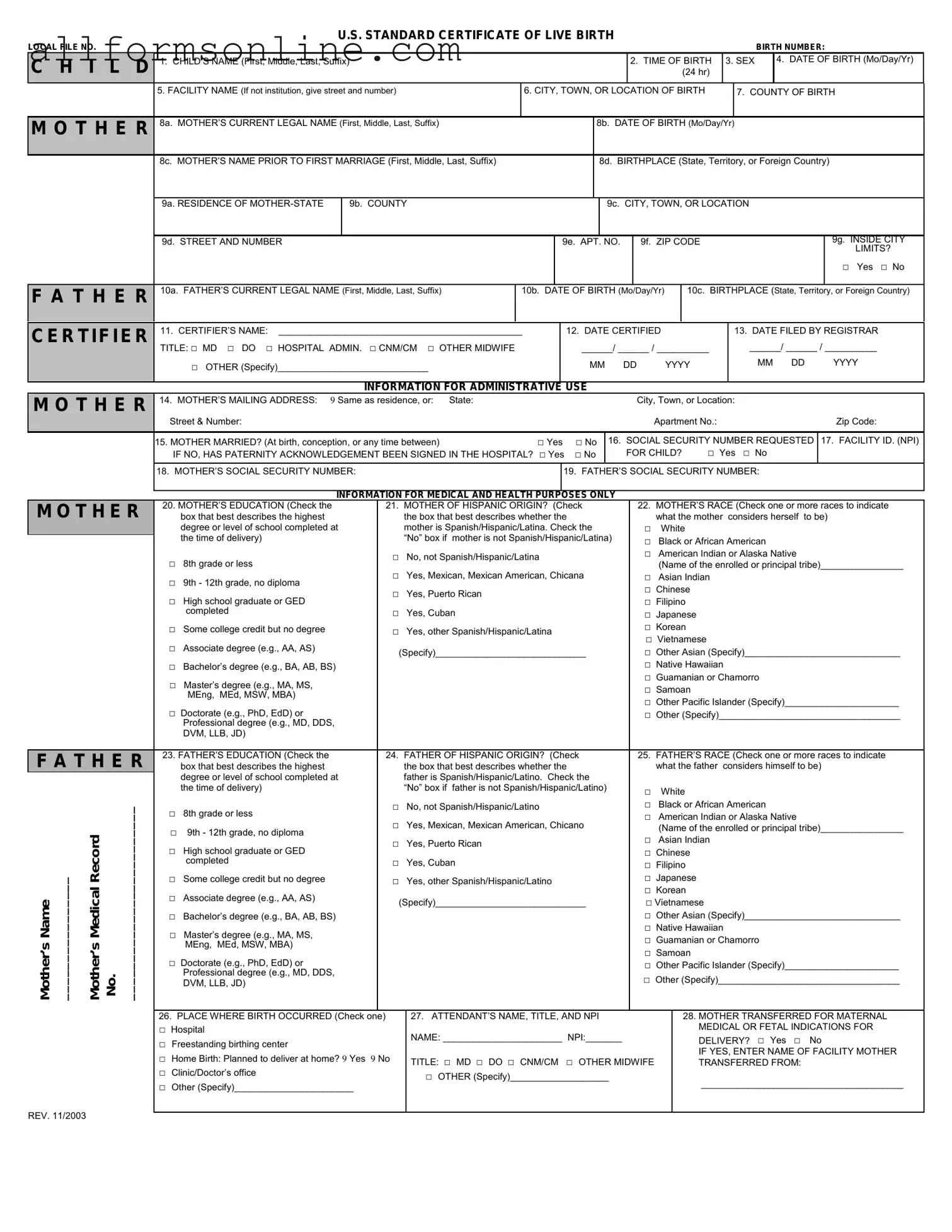What is the CDC U.S. Standard Certificate of Live Birth form?
The CDC U.S. Standard Certificate of Live Birth form is an official document used to record the birth of a child in the United States. It serves as the primary legal record of a child's birth and includes essential information such as the baby's name, date of birth, place of birth, and the parents' details. This certificate is vital for obtaining various services, such as applying for a Social Security number or enrolling in school.
Who is responsible for completing the birth certificate?
The responsibility for completing the birth certificate typically falls on the attending physician or midwife. However, parents should ensure that all information is accurate and complete before submitting the form. After the birth, the healthcare provider will usually file the certificate with the appropriate state or local vital records office.
How do I obtain a copy of my child's birth certificate?
To obtain a copy of your child's birth certificate, you will need to contact the vital records office in the state where the birth occurred. Each state has its own process, which may include filling out a request form, providing identification, and paying a fee. Some states allow online requests, while others may require you to apply in person or via mail.
What information is required on the birth certificate?
The birth certificate requires several pieces of information, including the child's name, date of birth, time of birth, place of birth, and the names of the parents. Additional details, such as the parents' addresses and occupations, may also be requested. Accurate information is crucial, as errors can lead to complications later on.
Can I make changes to the birth certificate after it has been filed?
Yes, it is possible to make changes to a birth certificate, but the process varies by state. Common reasons for amendments include correcting spelling errors or updating parental information. Typically, you will need to submit a request along with supporting documentation to the vital records office. Be sure to check your state's specific requirements for making changes.
Is the birth certificate confidential?
The birth certificate is generally considered a public record, meaning that it can be accessed by certain individuals or entities. However, access may be restricted to specific people, such as parents or legal guardians. States often have rules governing who can obtain copies and under what circumstances, so it’s essential to understand your state's privacy laws.
What should I do if I lose my child's birth certificate?
If you lose your child's birth certificate, don't worry; you can request a replacement. The process is similar to obtaining the original certificate. Contact the vital records office in the state where the birth occurred and follow their procedure for requesting a duplicate. You will likely need to provide identification and pay a fee for the replacement.
